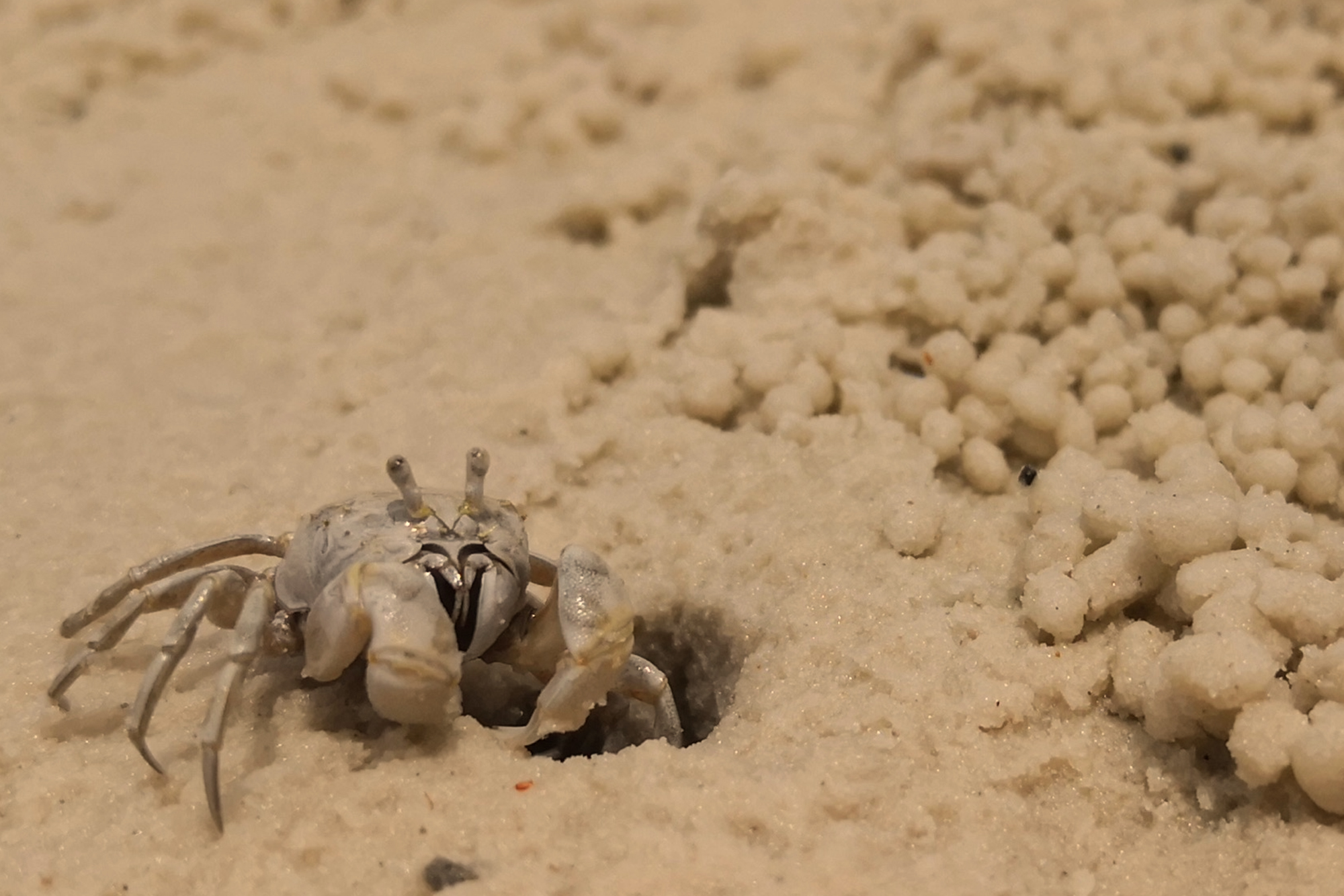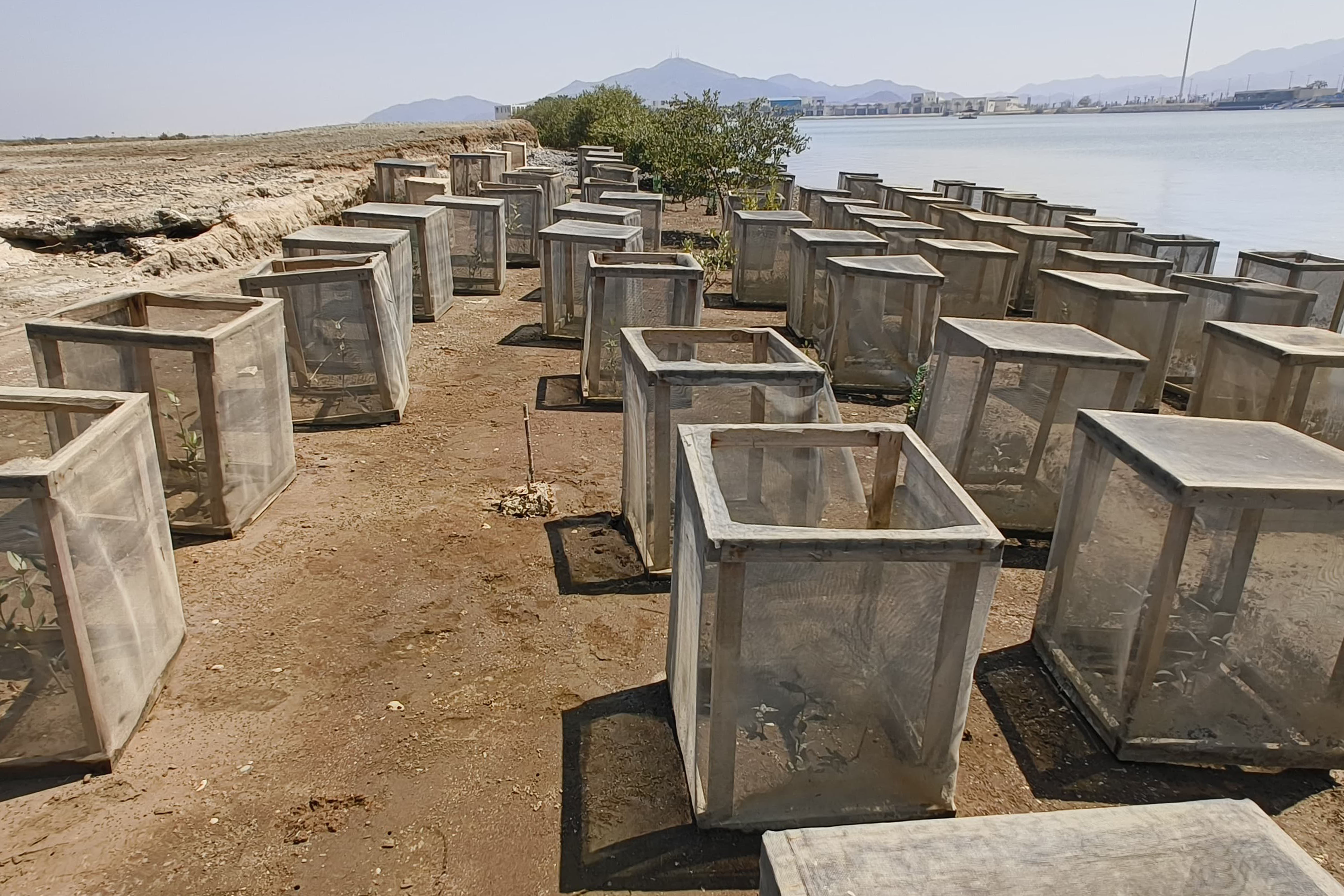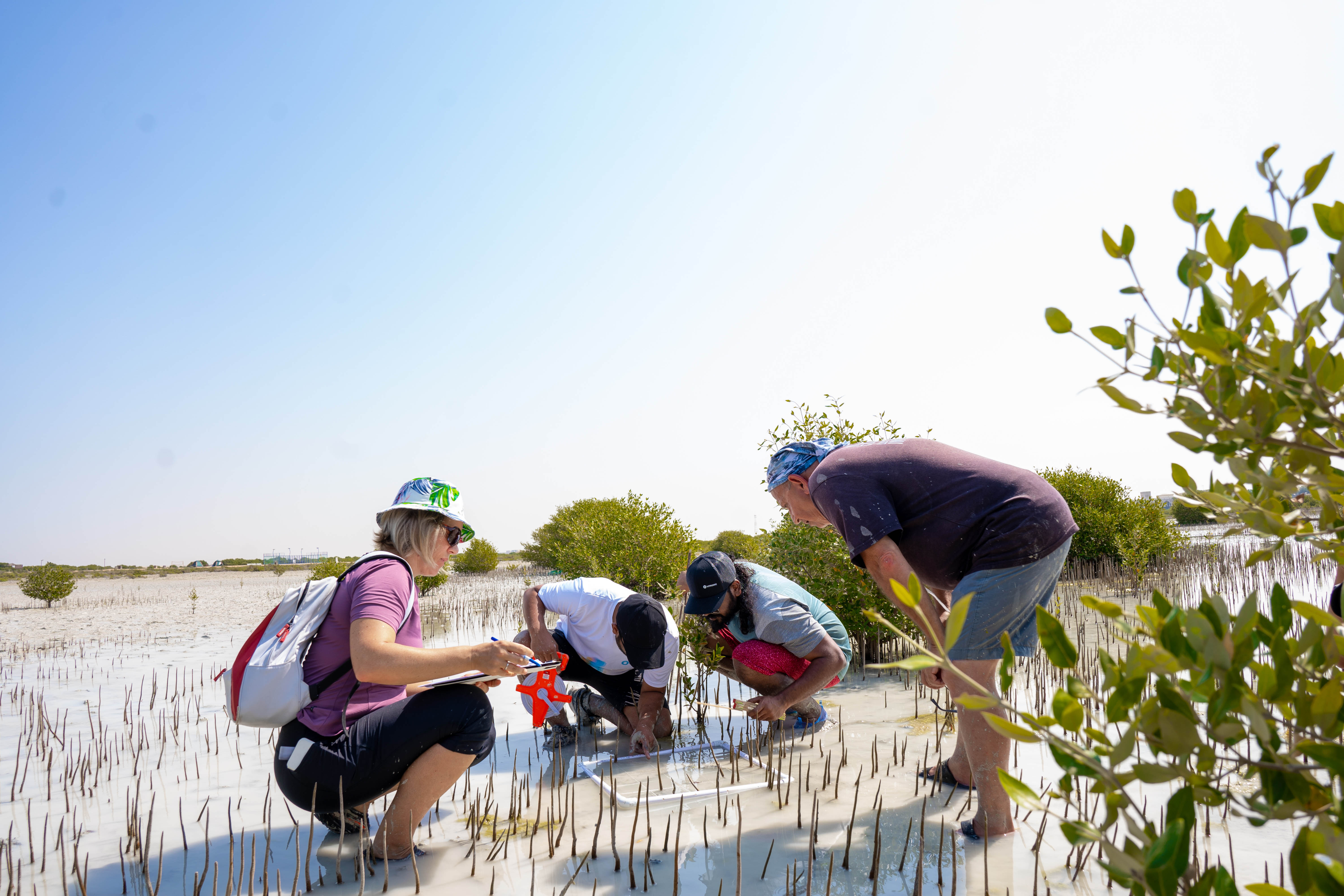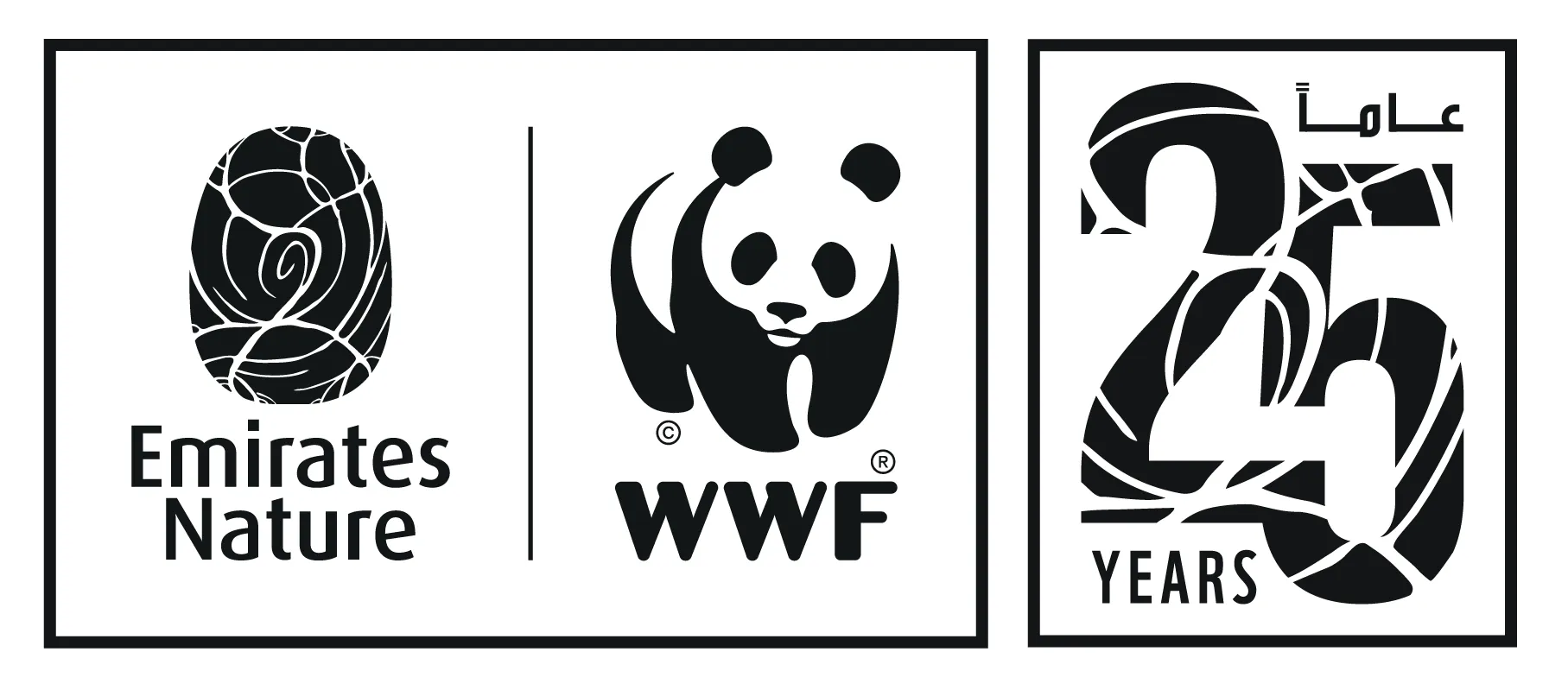Why we monitor mangrove trees in the UAE (and how we do it!)
November 12, 2025 /General
Mangroves are among the most valuable – and vulnerable – ecosystems on Earth. They store vast amounts of carbon, protect coastlines from storms and flooding and provide nurseries for fish and homes to endangered wildlife. In the UAE, they are an inseparable part of our natural heritage, lining coastal lagoons that make up more than a quarter of the nation’s shoreline.
As part of the Mastercard Priceless Planet Coalition (PPC) initiative, Emirates Nature-WWF has restored more than 8 hectares of mangroves across Umm Al Quwain, Ajman and Sharjah.
The project has now entered its second phase: Monitoring.
When it comes to restoration, planting mangroves is only the beginning. Saplings and seeds face challenges from tides, grazing animals, and shifting conditions. The real question, therefore, is not how many trees you plant, but how many ultimately survive. That is where monitoring comes in.
Changes in biodiversity are one of the clearest signs of recovery. Monitoring species such as crabs, fish, birds, bats and insects, shows whether the web of life is knitting back together – something tree counts alone can miss.
We use species as indicators of ecosystem health and value.


Some of the biodiversity indicators we monitor include crabs and bats.
-
Crabs are small but mighty. They aerate soils, recycle nutrients, and support fisheries as prey. By counting burrows and visible crabs over time, we can track whether their populations – and the ecosystem they sustain – are rebounding.
-
Birds react quickly to changes in habitat, so shifts in the species using mudflats, channels and mangrove edges give an early read on site quality. Tracking which birds return, and how they use restored areas versus nearby controls, helps us judge whether restoration is creating real feeding and roosting opportunities.
-
Bats pollinate plants, disperse seeds, and even help control pests. Using small, weatherproof bat detectors, we record their ultrasonic calls from dawn to dusk. We then match those calls to known species and compare activity over time to track how bat populations – and the ecosystem – are recovering.
The results are striking:
-
Rare desert bats such as Egyptian tomb bats and Persian trident bats, usually found inland, are foraging over coastal mangroves.
-
In Umm Al Quwain, the Persian leaf-nosed bat was recorded for the first time in the UAE since the 1970s.
Call patterns indicate these bats are not roosting (sleeping or nesting) in mangroves, but feeding there. This means the mangroves are working as a dining room for local bats – an important role – even if they roost elsewhere.

Healthy mangroves also provide what scientists call ecosystem services: nature-based benefits like nursery grounds for fisheries, natural shoreline protection from storm surges, and carbon locked away in mangrove soils. Monitoring tells us if these benefits for communities are coming back.
Just as importantly, transparent, repeatable measures are critical for building scientific credibility, guiding informed decisions, and securing funding for conservation. These insights support policies and financing tied to climate and coastal risk reduction – such as blue carbon accounting which measures how much carbon is removed from the atmosphere and stored in mangrove ecosystems, as well as the role of mangroves in coastal protection.


Monitoring is not passive. It is responsive, adaptive and community driven.
Our approach combines on-the-ground surveys, drone technology, and citizen science – with volunteers from our Leaders of Change Programme collecting valuable data alongside researchers. This blended model ensures results are robust, scalable and cost-efficient.
Recent examples show how monitoring leads directly to action.
-
In Kalba, Sharjah, young mangroves were struggling against strong tides and hungry wildlife. By putting up simple barriers, we gave them the breathing space they needed. Within just one month, the number of saplings showing healthy growth jumped from 39% to 96%.
-
In Umm Al Quwain, the problem was different: saplings planted higher on the shore were drying out and turning yellow. We created small channels to bring water back into these areas. With this lifeline, the mangroves are now far more likely to survive their first, most vulnerable years.


These quick adjustments show how listening to nature, and acting fast, can turn setbacks into success stories.
To scale this impact, we harness technology.
The Mangrove Monitoring Dashboard, developed by Emirates Nature-WWF, compiles real-time and historical data on mangrove survival and site health. It enhances adaptive management, empowers stakeholders and donors to track progress, and will soon integrate biodiversity indicators like crabs and bats.
With science, technology, and partnerships, mangrove restoration can be scaled to benefit both people and nature.
Insights from this science-led, ecosystem-based approach to restoration helped shape the Mangrove Restoration Guidelines for the UAE, co-authored by Emirates Nature-WWF, the Ministry of Climate Change and Environment (MOCCAE) and the Environment Agency – Abu Dhabi, under the Abu Dhabi Mangrove Initiative. These guidelines provide a unified, science-backed framework to ensure consistent and credible results across the country.
As we expand restoration efforts, your support is crucial.
